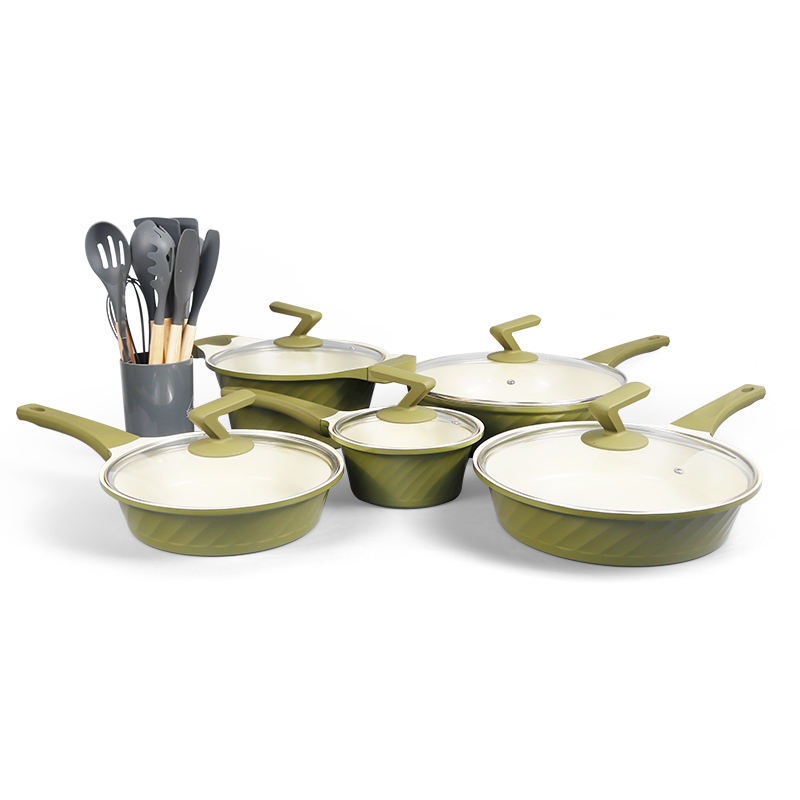2025-11-07
Cookware Sets are becoming more than just kitchen staples—they are signaling shifts in how people cook, what they prioritize, and how they maintain cookware over time. Cookware sets draw attention when they use safer materials, smarter designs, and deliver reliable, long-lasting performance.

Current trends show increasing demand for sets that use eco-friendly, non-toxic materials, and designs that adapt to smaller kitchens. Detachable or modular handles are gaining popularity to save space and enhance flexibility. In material choice, people lean toward stainless steel, high-quality ceramic coatings, or hybrid designs that offer both performance and safety. Buying sets with balanced piece counts—enough essentials but not excessive extras—is a growing preference.
Material choice matters. Stainless steel stays in style for its durability and flavor neutrality, though it carries a trade-off in heating speed unless combined with conductive cores. Ceramic or coated surfaces provide smooth food release, but their longevity depends on coating quality. Hybrid constructions blend metals to optimize heat spread and strength. Matching performance across pans in a set improves cooking flow and reduces surprises
Functionality often hides in design details. Secure, cool-touch handles improve safety when pots are full. Lids that seal well yet vent properly help retain moisture without pressure buildup. A set that works on gas, electric, and induction stoves adds versatility. Stackable pots or nesting designs help when space is limited. Lastly, visual harmony—matching colors, textures, and finishes—makes the kitchen look more cohesive.
Caring for a cookware set determines its lifespan. Use warm water and gentle sponge rather than aggressive scrubbers. If food sticks, soak before cleaning and use mild solutions. For stains or discoloration on metal surfaces, a diluted acidic wash can help restore shine. Always dry after washing. Storing pots carefully—avoiding heavy stacking or pressing lids—prevents scratches or warping.
Check a cookware set’s details before buying. Lift a pot partly filled to see if its handle feels strong and steady. Test how thick the pot walls and base are—thin bottoms tend to warp, especially under high heat or on induction stoves. Try fitting the lid: see whether it closes firmly without gaps. Inspect the rim or pour lip to ensure it pours cleanly without dripping.
Confirm that the base matches your cooktop type—magnetic bases matter on induction surfaces. A flat, wide base helps distribute heat evenly and reduces hot spots. Handles should be securely attached (riveted often helps), and made of materials that resist heat so your grip stays safer. Check whether lids are tight enough to trap steam, yet allow release so food does not boil over.
Look over warranty terms and support options. A set cheap upfront but weak in durability often costs more later when replacing warped or damaged pieces. Investing in a set built for long use helps avoid frustration of frequent replacements.
The future of Cookware Sets depends on strong balance among material safety, reliable performance, attractive design, and lasting value. Users now expect sets that resist warping, avoid unsafe coatings, and heat evenly so every pan behaves similarly. A good set should feel dependable, suit the way you cook, and match your kitchen setup. Design appeal matters too — matching finishes and handles that stay cool add to daily satisfaction. Investing in sets built to last often costs more up front but rewards you over years through less replacement, safer cooking, and more consistent results.